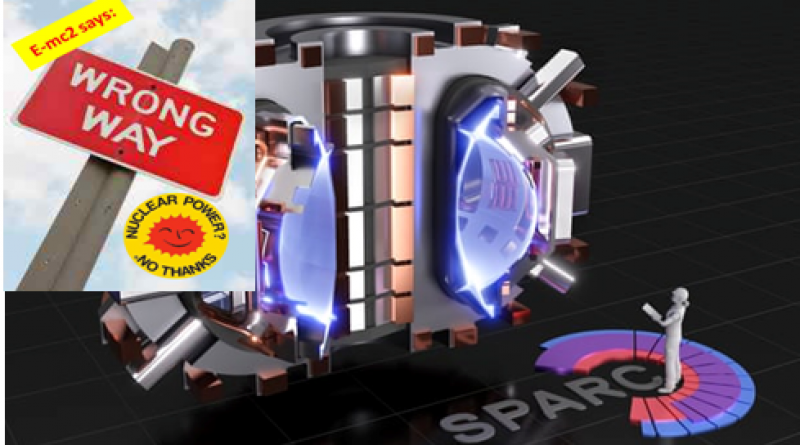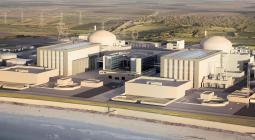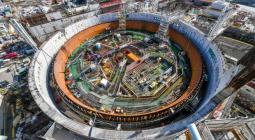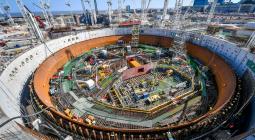Is nuclear fusion the answer to the climate crisis?

Promising new studies suggest the long elusive technology may be capable of producing electricity for the grid by the end of the decade.
If all goes as planned, the US will eliminate all greenhouse gas emissions from its electricity sector by 2035 – an ambitious goal set by President-elect Joe Biden, relying in large part on a sharp increase in wind and solar energy generation. That plan may soon get a boost from nuclear fusion, a powerful technology that until recently had seemed far out of reach.
Researchers developing a nuclear fusion reactor that can generate more energy than it consumes have shown in a series of recent papers that their design should work, restoring optimism that this clean, limitless power source will help mitigate the climate crisis.
While the new reactor still remains in early development, scientists hope it will be able to start producing electricity by the end of the decade. Martin Greenwald, one of the project’s senior scientists, said a key motivation for the ambitious timeline is meeting energy requirements in a warming world. “Fusion seems like one of the possible solutions to get ourselves out of our impending climate disaster,” he said.
Nuclear fusion, the physical process that powers our sun, occurs when atoms are pushed together at extremely high temperatures and pressure, causing them to release tremendous amounts of energy by merging into heavier atoms.
Since it was first discovered last century, scientists have sought to harness fusion, an extremely dense form of power whose fuel – hydrogen isotopes – are abundant and replenishable. Moreover, fusion produces no greenhouse gases or carbon, and unlike fission nuclear reactors, carries no risk of meltdown.
Harnessing this form of nuclear power, though, has proven extremely difficult, requiring heating a soup of subatomic particles, called plasma, to hundreds of millions of degrees – far too hot for any material container to withstand. To work around this, scientists developed a donut-shaped chamber with a strong magnetic field running through it, called a tokamak, which suspends the plasma in place.
MIT scientists and a spinoff company, Commonwealth Fusion Systems, began designing the new reactor, which is more compact than its predecessors, in early 2018, and will start construction in the first half of next year. If their timeline goes as planned, the reactor, called Sparc, will be capable of producing electricity for the grid by 2030, according to researchers and company officials. This would be far faster than existing major fusion power initiatives.
Existing reactor designs are too large and expensive to realistically generate electricity for consumers. Through the use of cutting-edge, ultra-strong magnets, the team at MIT and Commonwealth Fusion hope to make a tokamak reactor that is compact, efficient and scalable. “What we’ve really done is combine an existing science with new material to open up vast new possibilities,” Greenwald said
Having demonstrated that the Sparc device can theoretically produce more energy than it requires to run in the research papers published in September, the next step involves building the reactor, followed by a pilot plant that will generate electricity onto the grid.
Scientists and entrepreneurs have long made promises about fusion being just around the corner, only to encounter insurmountable problems. This has created reluctance to invest in it, particularly as wind, solar and other renewables — although less powerful than fusion — have become more efficient and cost effective.
But the tide is changing. In Biden’s $2tn plan, he named advanced nuclear technologies as part of the decarbonization strategy, the first time the Democrats have endorsed nuclear energy since 1972. There is also significant investment coming from private sources, including some major oil and gas companies, who see fusion as a better long term pivot than wind and solar.
According to Bob Mumgaard, chief executive of Commonwealth Fusion, the aim is not to use fusion to replace solar and wind, but to supplement them. “There are things that will be hard to do with only renewables, industrial scale things, like powering large cities or manufacturing,” he said. “This is where fusion can come in.”
The plasma science community is generally enthusiastic about Sparc’s progress, though some question the ambitious timeline, given engineering and regulatory hurdles.
Daniel Jassby, who worked as a research scientist at the Princeton Plasma Physics Lab for 25 years, is skeptical about whether a fusion reactor like SPARC will ever provide a feasible alternative source of energy. Tritium, one of the hydrogen isotopes that will be used as fuel by Sparc, is not naturally occurring and will need to be produced, he said.
The team at MIT propose that this substance will be regenerated continuously by the fusion reaction itself. But Jassby believes that this will require a huge amount of electricity, which will make the reactor prohibitively expensive. “When you consider we get solar and wind energy for free, to rely on fusion reaction would be foolish,” he said.
Mumgaard concedes that the challenges that lie ahead are daunting. But he remains confident.
“There is a broader trend in acknowledging how important climate is and that we need all hands on deck,” he said. “We got into this problem with technology, but with fusion there are big opportunities to solve this with technology.”
28 December 2020
The Guardian




